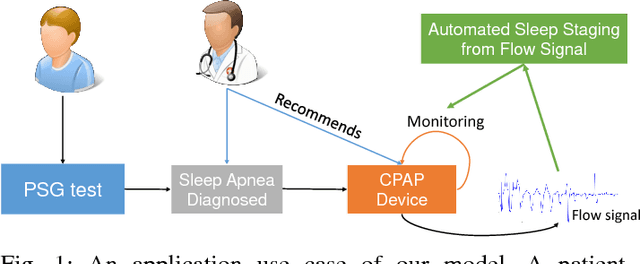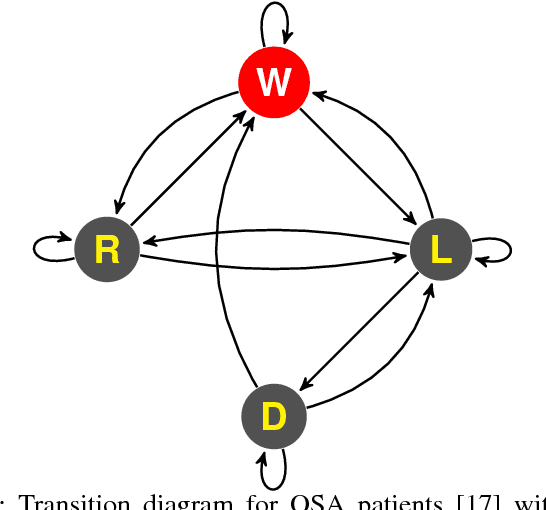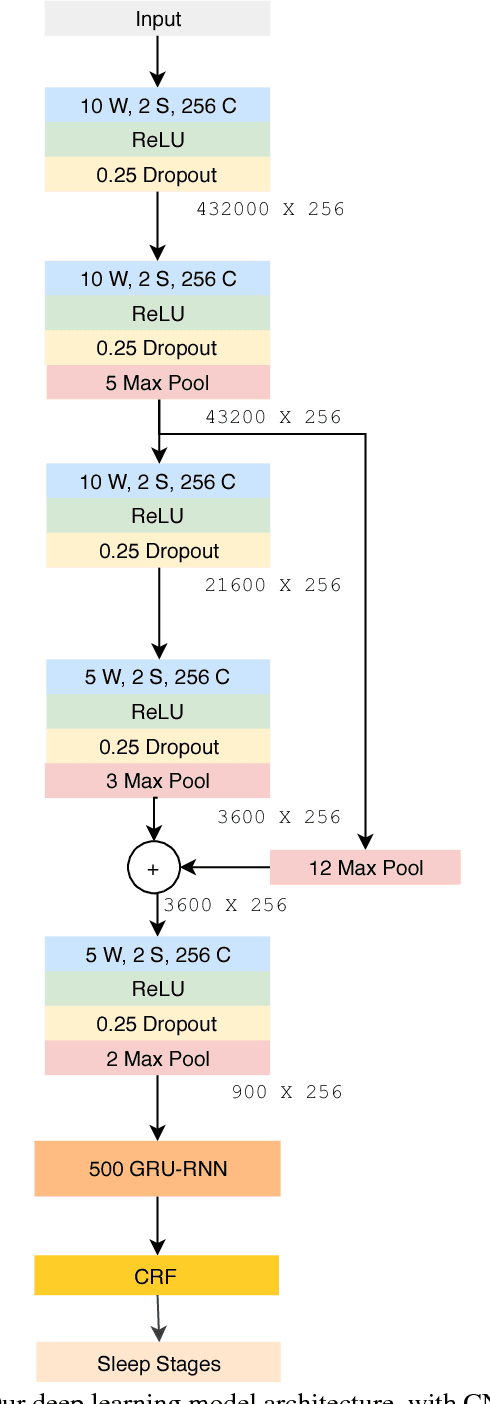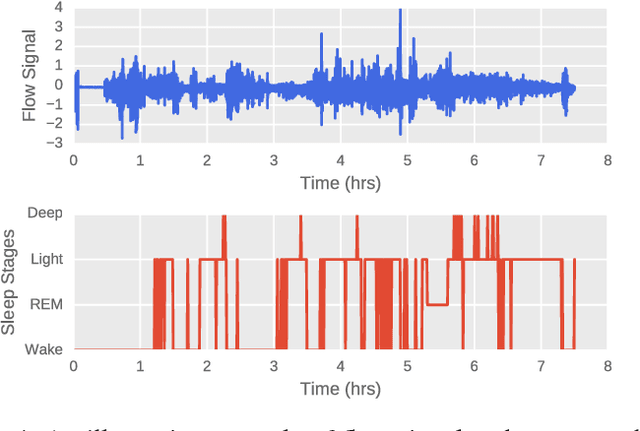Shafiq R. Joty
A Structured Learning Approach with Neural Conditional Random Fields for Sleep Staging
Oct 28, 2018



Abstract:Sleep plays a vital role in human health, both mental and physical. Sleep disorders like sleep apnea are increasing in prevalence, with the rapid increase in factors like obesity. Sleep apnea is most commonly treated with Continuous Positive Air Pressure (CPAP) therapy. Presently, however, there is no mechanism to monitor a patient's progress with CPAP. Accurate detection of sleep stages from CPAP flow signal is crucial for such a mechanism. We propose, for the first time, an automated sleep staging model based only on the flow signal. Deep neural networks have recently shown high accuracy on sleep staging by eliminating handcrafted features. However, these methods focus exclusively on extracting informative features from the input signal, without paying much attention to the dynamics of sleep stages in the output sequence. We propose an end-to-end framework that uses a combination of deep convolution and recurrent neural networks to extract high-level features from raw flow signal with a structured output layer based on a conditional random field to model the temporal transition structure of the sleep stages. We improve upon the previous methods by 10% using our model, that can be augmented to the previous sleep staging deep learning methods. We also show that our method can be used to accurately track sleep metrics like sleep efficiency calculated from sleep stages that can be deployed for monitoring the response of CPAP therapy on sleep apnea patients. Apart from the technical contributions, we expect this study to motivate new research questions in sleep science.
Machine Translation Evaluation with Neural Networks
Oct 05, 2017



Abstract:We present a framework for machine translation evaluation using neural networks in a pairwise setting, where the goal is to select the better translation from a pair of hypotheses, given the reference translation. In this framework, lexical, syntactic and semantic information from the reference and the two hypotheses is embedded into compact distributed vector representations, and fed into a multi-layer neural network that models nonlinear interactions between each of the hypotheses and the reference, as well as between the two hypotheses. We experiment with the benchmark datasets from the WMT Metrics shared task, on which we obtain the best results published so far, with the basic network configuration. We also perform a series of experiments to analyze and understand the contribution of the different components of the network. We evaluate variants and extensions, including fine-tuning of the semantic embeddings, and sentence-based representations modeled with convolutional and recurrent neural networks. In summary, the proposed framework is flexible and generalizable, allows for efficient learning and scoring, and provides an MT evaluation metric that correlates with human judgments, and is on par with the state of the art.
* Machine Translation, Reference-based MT Evaluation, Deep Neural Networks, Distributed Representation of Texts, Textual Similarity
 Add to Chrome
Add to Chrome Add to Firefox
Add to Firefox Add to Edge
Add to Edge